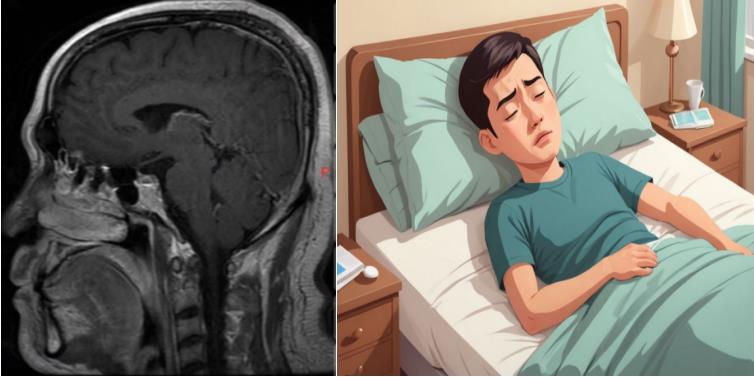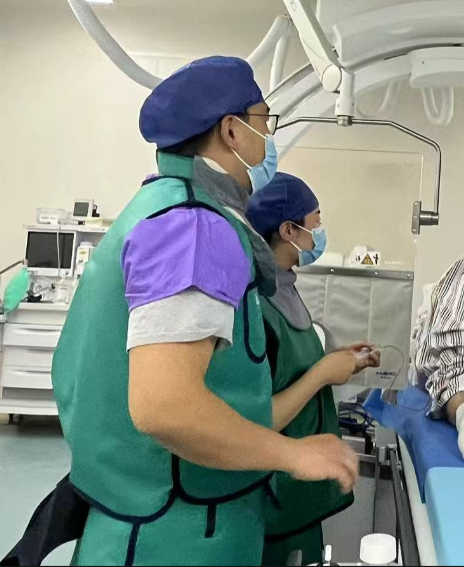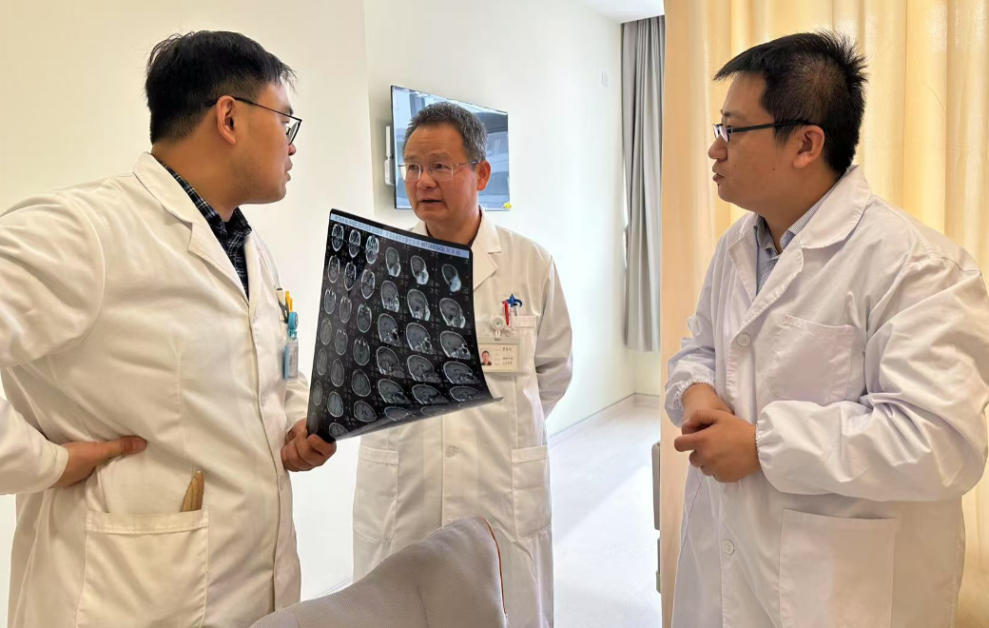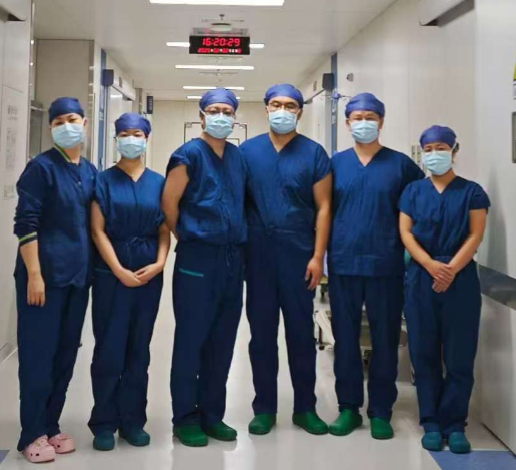Recently, Department of Neurology of Land Port Division of the First Affiliated Hospital (FAH) of Xi'an Jiaotong University (XJTU) successfully completed the first case of targeted epidural blood patch (EBP) in northwest China, signifying a novel breakthrough in the field of nervous system headache in FAH.

A middle-aged male patient had the chief complaints of headache, head distension and tinnitus for 5 years, which were aggravated over the recent 2 years. He was admitted to Department of Neurology of FAH and diagnosed with intracranial hypotension syndrome.
The diagnosis and treatment of this case were guided by Director Luo Guogang, and assisted by Professor Wu Liyong, Li Junjie and Wang Zhen from Xuanwu Hospital. Preoperatively, attending physician Huo Kang's team accurately located the cerebrospinal fluid leakage location via digital subtraction myelography (DSM), determined and reported the treatment regimen. With tremendous supports from Medical Department, Operating Room and relevant departments, the team guaranteed that the patient fully understood the treatment process and signed the informed consent form. Intraoperatively, under the C-arm guidance, the patient's autologous blood was accurately injected into the epidural space, and the leakage was successfully treated. The surgery was successfully completed, the patient was recovered after operation, and relevant symptoms of postural headache were relieved.


Intracranial hypotension syndrome is a rare disease, which is difficult to diagnose and has a high misdiagnosis rate. The average time to diagnosis is up to 4 months. Lumbar puncture can be used to directly measure the cerebrospinal fluid pressure and confirm the diagnosis. In terms of treatment, a large quantity of fluid is mainly infused to increase intracranial pressure and relieve headache symptoms by increasing the volume of cerebrospinal fluid. However, 25% of these patients remain untreated with conservative therapy.
Targeted EBP is a precise treatment procedure based on disease classification, especially for intracranial hypotension syndrome caused by cerebrospinal fluid leakage, and its effective rate has been significantly enhanced. Spinal magnetic resonance hydrography, digital subtraction CT myelography, intraspinal angiography and other techniques are employed to precisely pinpoint the leakage location and achieve targeted treatment, thereby significantly enhancing the success rate.
Successful application of targeted EBP by FAH brings new hope to patients with intracranial hypotension syndrome in northwest China.
